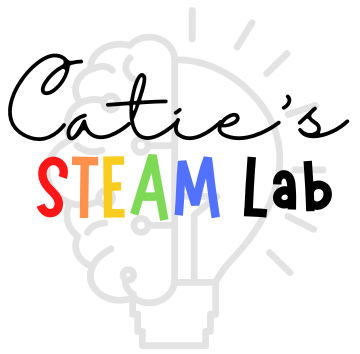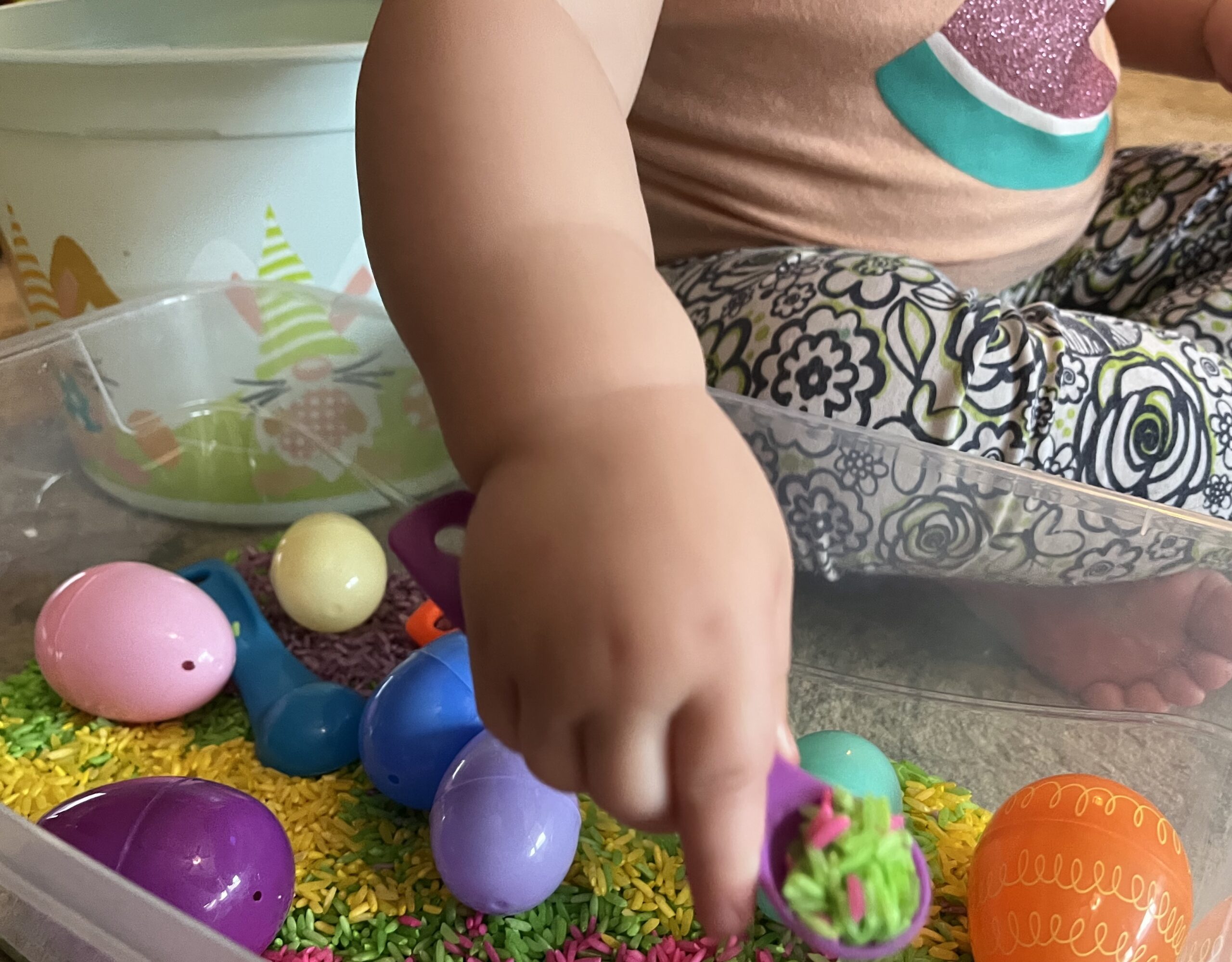I know I cannot be the only person juggling countless responsibilities. To top it all off, Evie has been extra curious about everything going on, and she desperately wants to be involved. Let me tell you what, dinner is easier to cook when I’m not holding a toddler. My saving grace: these easter sensory bins!
This post may contain affiliate links, which means I’ll receive a commission if you purchase through my links, at no extra cost to you. Please read full disclosure for more information.
Easter Sensory Bins: Colored Rice
With leftover rice from our egg dyeing activity, Evie and I created a fun, dyed rice sensory bin. The best part of this is that I was able to repurpose the rice. Waste Not, Want Not! This easy sensory bin contained three things:
- Dyed rice
- Measuring spoons
- Easter eggs
We placed these in a clear storage container that we have laying around for these random sensory activities. Evie had a brilliant idea to make her sensory bin that much more fun. She grabbed her Easter basket and started transferring her rice from the bin to the basket! She would use the measuring spoons to fill an egg and then dump the egg into the Easter basket.
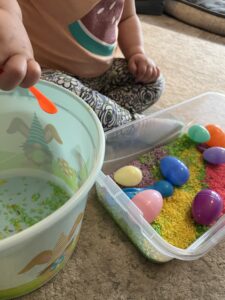
Making Dyed Rice
The dyed rice was so easy to make! As an added bonus, your toddler can help you make the colored rice! There are a couple of things you will need to gather:
- Ziploc bags
- Rice
- Rubbing alcohol (isopropyl alcohol)
- Food coloring
When you are ready to make your colored rice all you need to do is:
- Add your rice to your ziploc bag
- Add 1 – 2 teaspoons (5 – 10 ml) of rubbing alcohol to your rice. This step creates more vibrant colors. It can be omitted, however, the colors aren’t as pretty or evenly spread.
- Add food coloring to rice. The more food coloring you add, the darker the color. I used 3-5 drops of food coloring for a brighter color.
- Seal the ziploc bag and mix until your color is evenly distributed. Your toddler can help here! Evie can open the bag so I sealed it with a layer of duct tape to prevent her from getting inside.
- Lay your rice out on an parchment paper or a pan in a flat, even layer. The added bonus of using rubbing alcohol is that it dries really fast.
- To ensure that the rice is dried completely, turn the rice every 20 minutes until it is completely dry. I left the rice out during naptime and by the time Evie woke up it was ready to go!
Using this method, I created 4 different colors: green, purple, yellow, and pink. However, you can use any color you would like for this easter sensory bin!
I loved this bin because Evie loved it. She practiced scooping and carefully transferring. It was a wonderful way to practice those fine motor skills!
Easter Sensory Bins: Eggs in Water
Evie LOVES to play in water. I need to get this girl a water table. If you have any recommendations feel free to send them my way! For now, we get by with a water sensory bin! Y’all I told you this was an easy sensory bin idea and I intend on delivering!
All you need:
- Water
- Plastic Easter Eggs
- Large cooking spoon
- Towel (optional)

Remember when I mention cooking is easier without carrying a toddler. This one was my solution! I happened to be boiling water for our egg dyeing activity, and decided it would be easier (and less stressful) if she got to ‘boil’ her own eggs. I filled her bucket with room temperature water, put some plastic eggs in the water and gave her spoon. She figured it out pretty quickly. She stirred her eggs, tried to scoop her eggs out of the water, an practiced pouring water from one egg to another. Overall it was easy, slightly messy, and allowed me to finish preparing our eggs.
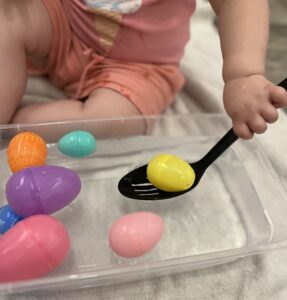
STEM Integration Opportunity: Float or Sink
I know that not every child will be satisfied with this activity, it is simple but if your child has mastered those skills, they may not find it engaging. You can take this activity up a notch by creating a float or sink activity!
Stuff eggs with different materials and see if they float or sink. I’ll be honest, most of the items that I tried (beans, rice, pasta, and coins) floated! The coins sunk once I added enough! Ask your child what they think will happen if they add objects inside their easter egg. Allow them to make predictions and test their predictions!
If you are finding that all of your materials are floating, gather up spare change and ask your child how many coins will it take to sink an egg. Now you have the opportunity to introduce different coins, and counting!
We have three different sizes of plastic easter eggs laying around our house. Will each size need the same amount of coins to sink or different amounts? Test it out to see!
Easter Sensory Bins: Mini Easter Egg Hunt
I will admit it…I overstocked for Easter. After a disappointing trip to our dollar store before St. Patrick’s Day, I grabbed everything that I thought I might need when I saw it, the first time. I grabbed too much. So this final Easter sensory bin is a mini easter egg hunt because I have plenty of supplies.
Things I used for this bin:
- Paper Easter grass
- Easter eggs
- Stickers
- Stamps
- Marshmallows
I tore the paper grass into smaller pieces. The last thing I wanted was for Evie to get frustrated and dump and frantically shake the paper to find the eggs…that makes a bigger mess than I want to clean. Using about 10 eggs, I filled the eggs with stickers, a stamp, and a couple of mini marshmallows. I hid the eggs in the grass and let Evie search for the eggs. Honestly, it was probably her favorite egg hunt this year. There was no pressure to grab the eggs quickly and she was free to explore each egg at her own pace.
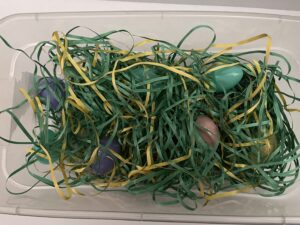
She did find the stamp early on. This resulted in a 20 minute pause while she played with the stamp for a while. Afterwards, she returned to her egg hunt!
Final Thoughts
I love sensory bins! It allows Evie to explore independently while also having the opportunity to practice skills. Sensory bins do not need to be complex or time consuming. A quick, easy sensory bin can result in a couple extra minutes for mom or dad to finish dinner. These sensory bins can also be great opportunities to be intentional with play time. How did your child enjoy these sensory bins? Did they find ways to make them their own like Evie? Did they have a favorite? Feel free to share your thoughts or experiences! I love to hear about your child’s learning journey! As always, thank you for reading and allowing me to become a part of your child’s learning experience! I hope you all have buckets of fun!
